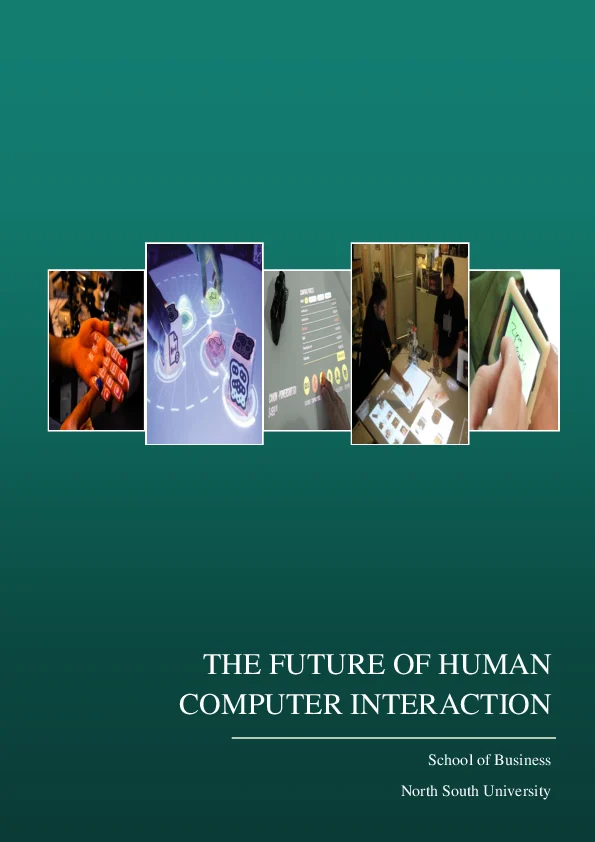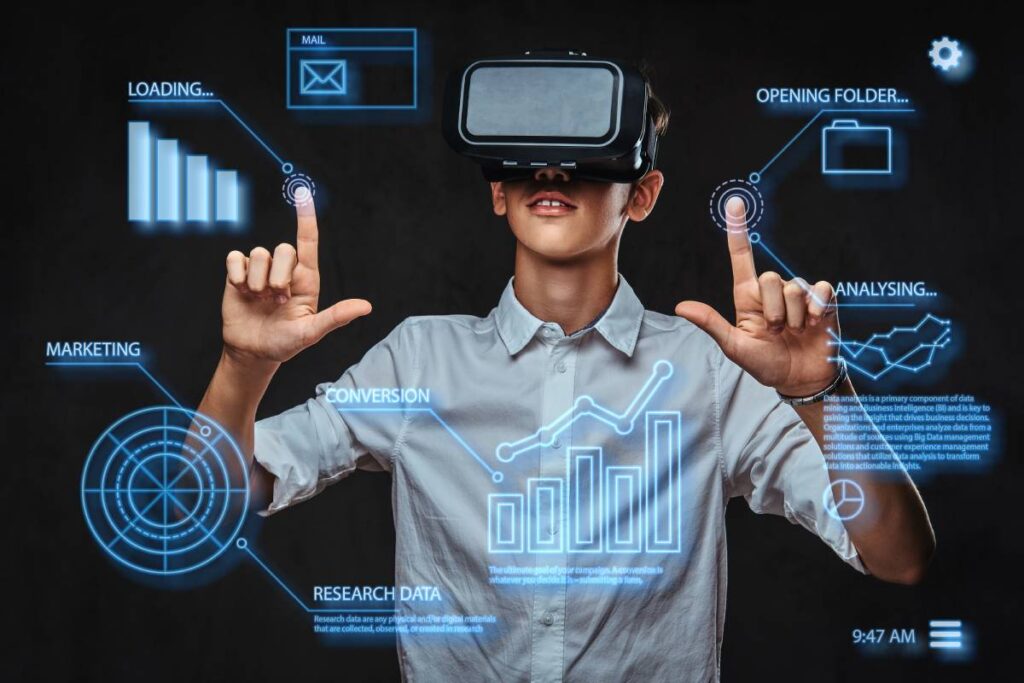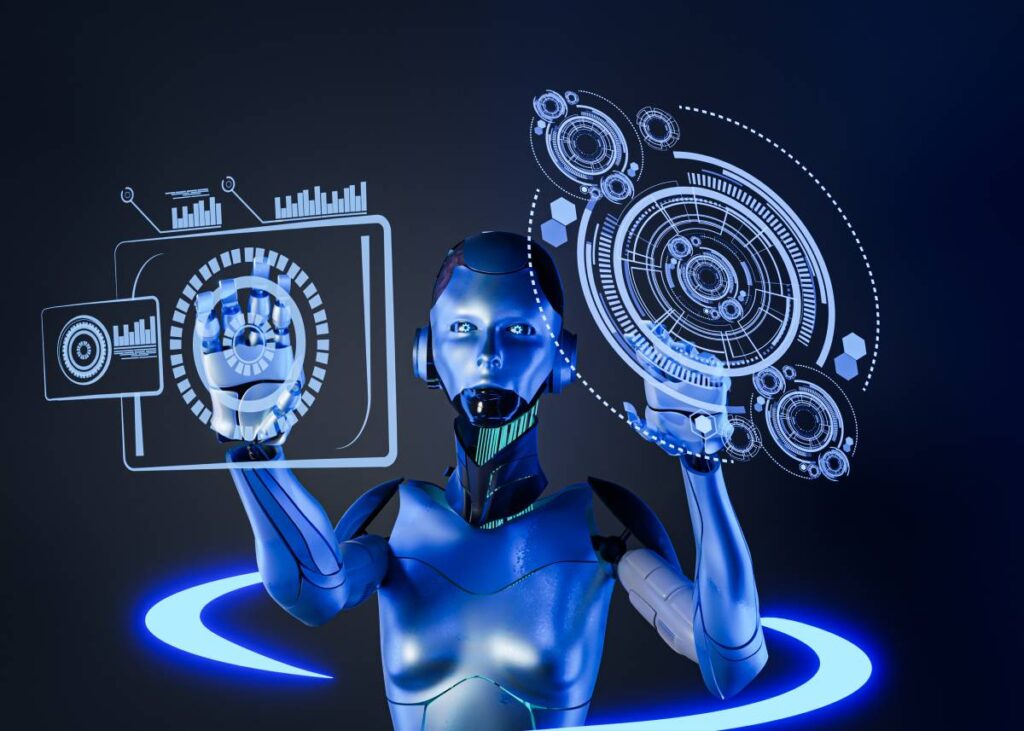The future of human-computer interaction is an exciting and rapidly evolving field that encompasses the study of how people interact with computers and other digital technologies. This area of research explores new ways for humans to communicate with computers, such as through voice recognition, gesture control, and brain-computer interfaces. As technology continues to advance, the future of human-computer interaction holds great promise for creating more intuitive and seamless experiences for users.
One of the most intriguing aspects of the future of human-computer interaction is the potential for virtual and augmented reality to revolutionize the way we interact with digital information. These immersive technologies have the power to transport users to new and exciting digital environments, allowing for more natural and intuitive interactions with computers. Additionally, advancements in artificial intelligence and machine learning hold the promise of creating more personalized and adaptive human-computer interfaces that can anticipate and respond to user needs in real time. As the boundaries between the physical and digital worlds continue to blur, the future of human-computer interaction is poised to offer unprecedented levels of connectivity and interaction.
The Evolution of Human-Computer Interaction
Human-computer interaction has evolved significantly over the years, from the early days of punch cards and command-line interfaces to the modern era of touchscreens, voice recognition, and gesture-based controls. As technology continues to advance, so too does the way we interact with computers. The evolution of human-computer interaction has been driven by a combination of technological innovation, user experience research, and the increasing demand for more intuitive and natural ways of interacting with technology.
With the rise of artificial intelligence, virtual reality, and augmented reality, the future of human-computer interaction is likely to involve even more immersive and seamless experiences. As we move towards a more interconnected world with the Internet of Things and smart devices, the way we interact with computers is set to become even more integrated into our daily lives, blurring the lines between the digital and physical worlds.
Challenges and Opportunities in Human-Computer Interaction
While the future of human-computer interaction holds immense promise, it also presents a number of challenges. One of the key challenges is designing interfaces that are accessible and inclusive for all users, regardless of their abilities or technical expertise. Additionally, as technology becomes more pervasive, there is a growing concern about the potential negative impact on human well-being, such as increased screen time and digital addiction.
However, these challenges also present opportunities for innovation and creativity in the field of human-computer interaction. Designing interfaces that prioritize user well-being, privacy, and security will be crucial in shaping the future of technology. Furthermore, the potential for more personalized and adaptive interfaces, driven by machine learning and user data, opens up new possibilities for creating truly tailored and intuitive user experiences.
Emerging Technologies Shaping Human-Computer Interaction
The future of human-computer interaction is being shaped by a range of emerging technologies, including virtual reality, augmented reality, artificial intelligence, and natural language processing. Virtual and augmented reality offer new ways of interacting with digital content, creating immersive and interactive experiences that go beyond traditional screens and keyboards.
Artificial intelligence and natural language processing are enabling more intuitive and conversational interfaces, allowing users to interact with computers in a more natural and human-like manner. These technologies have the potential to revolutionize the way we interact with computers, making it easier and more seamless to access information, perform tasks, and communicate with digital systems.
Impact of Human-Centered Design on Interaction
Human-centered design plays a crucial role in shaping the future of human-computer interaction. By prioritizing the needs, preferences, and abilities of users, designers can create interfaces that are intuitive, user-friendly, and inclusive. This approach involves conducting user research, gathering feedback, and iterating on designs to ensure that they align with the way users think and behave.
Human-centered design also emphasizes the importance of empathy and understanding the diverse range of users who will interact with a system. By taking a holistic and user-centric approach to design, it is possible to create interfaces that not only meet the functional requirements but also enhance the overall user experience.
Ethical Considerations in Human-Computer Interaction
As human-computer interaction becomes increasingly integrated into our daily lives, there are important ethical considerations that must be addressed. These include issues such as privacy, data security, algorithmic bias, and the potential impact of technology on social dynamics and well-being. Designers and developers have a responsibility to prioritize the ethical implications of their work and consider the broader societal impact of the interfaces they create.
Furthermore, as technology becomes more advanced and autonomous, questions around accountability and transparency in human-computer interaction become even more pressing. It is essential to consider the ethical implications of new technologies and ensure that they are designed and implemented in a way that aligns with societal values and principles.
Personalization and Adaptation in Human-Computer Interaction
One of the key trends in the future of human-computer interaction is the increasing emphasis on personalization and adaptation. With the abundance of user data and advancements in machine learning, interfaces have the potential to become more tailored to individual users, adapting to their preferences, habits, and context. This can lead to more efficient and personalized experiences, as well as a deeper understanding of user needs and behaviors.
Personalization and adaptation also have the potential to make technology more accessible and inclusive, catering to a diverse range of users with varying needs and abilities. By creating interfaces that can adapt to different users and contexts, it is possible to enhance the overall usability and accessibility of technology for a broader audience.
Social and Collaborative Aspects of Human-Computer Interaction
Human-computer interaction is not only about individual users interacting with technology but also about the social and collaborative aspects of how people interact with each other through technology. The future of human-computer interaction is likely to involve more seamless and integrated ways for people to communicate, collaborate, and share experiences through digital interfaces.
This could include advancements in virtual collaboration tools, social networking platforms, and interactive shared environments that enable new forms of communication and collaboration. These developments have the potential to reshape the way we connect with others and work together, blurring the lines between physical and digital interactions.
Accessibility and Inclusivity in Human-Computer Interaction
Ensuring accessibility and inclusivity in human-computer interaction is a critical consideration for the future of technology. Designing interfaces that are accessible to users with disabilities, as well as inclusive of diverse cultural and linguistic backgrounds, is essential for creating technology that can be used by everyone. This involves considering factors such as visual, auditory, and motor impairments, as well as designing interfaces that are culturally sensitive and support multiple languages and communication styles.
Advancements in assistive technologies and inclusive design practices have the potential to make technology more accessible to a broader range of users. By prioritizing accessibility and inclusivity in human-computer interaction, it is possible to create interfaces that empower all users to fully participate in the digital world.
The Future of Human-Computer Interaction
| Aspect | Summary |
|---|---|
| Virtual Reality | Immersive experiences that blend the digital and physical worlds, revolutionizing how we interact with computers. |
| Augmented Reality | Enhancing real-world environments with digital information, creating new ways for humans to interact with computers. |
| Gesture Control | Using hand and body movements to control and interact with devices, eliminating the need for physical input devices. |
| Voice Recognition | Enabling natural language communication with computers, making interactions more intuitive and efficient. |
| Brain-Computer Interfaces | Direct communication between the brain and computers, allowing for seamless interaction without physical actions. |



